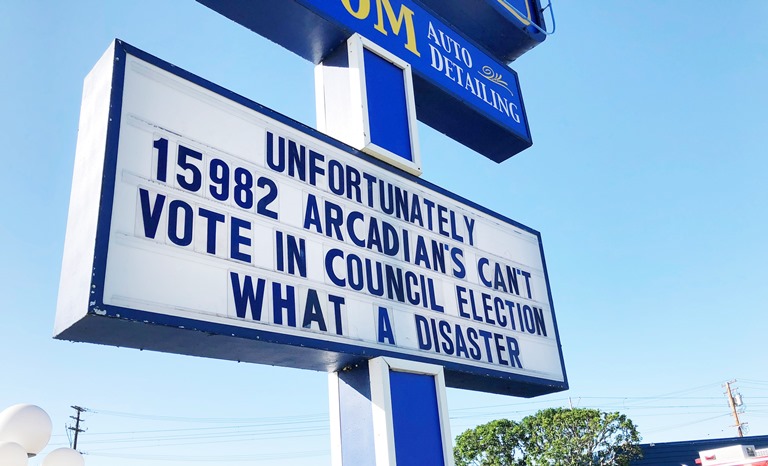
By Susan Motander
Last summer Michele Hanisee, president of the Los Angles Association of Deputy District Attorneys presented a report to the Monrovia City Council that reviewed the impact of Assembly Bill 109, and Propositions 47 and 57. With the proposed ballot proposition going through the signature process it is important to review that report again. The following is a summary of her report.
Included the fact that AB 109 means that prisoners convicted of non-violent, non-sexual offences would be housed in County Jail rather than state prison and upon release would be supervised by County Probation rather than State Parole Agent. Under the old law violations of parole could result in another year in State Prison. AB 109 resulted in mainly “flash incarcerations” of only 10 days with a maximum of 180 days in a few cases.
This did result in a decreased state prison population, but a substantially increased population in County Jail. So-called “Low-level” offenders were often released from County Jail to make room for others. With all these early releases, there was an increase in property crime rates.
Proposition 47 was called the “Safe Neighborhoods and Schools Act” and this was passed on November 4, 2014. According to Hanisee, the key features of this measure were: reduction of certain drug possession felonies to misdemeanors reduced theft of less that $950 to a misdemeanor and allowed those already convicted of these offences to petition for reduction of the charges and resentencing.
Prior to the passage of Proposition 47, theft of material worth over $400 was considered a felony and theft from any business was considered a felony after passage the theft was not a felony if the value was under $950. Prop 47 also reclassified all drug possession for person use a misdemeanor (previously some were considered felonies).
This proposition has some of the same results as AB109 in that state prison populations went down while the populations in county jails grew. Again low level offenders were released early to make room in the County jails for others. Initially violent and property crime rates went down, but then started rising steadily again.
The last Proposition Hanisee reviewed was Proposition 57, the “Public Safety and Rehabilitation Act that was passed on November 8, 2016. This measure changed the rules for transferring a case against a juvenile from Juvenile Court to regular adult criminal system. Previously the District Attorney could file in the adult system based on the age of the juvenile and the crime charged. Under the new system only a judge can transfer a “juvie” to the adult system.
The other major change to the system after Prop 57’s passage was the change in the possible release dates for “non-violent” offenders. Prior to passage, prisoners could be considered for parole only after serving 50% of their entire sentence. After they were eligible for parole after serving half of the “primary offense.” This means that if convicted of several counts with enhancements (meaning additional time) for being in a gang, or using a gun, or having prior offenses would mean nothing.
Prisoners also received at most 50% credit for what is called good time/work (ed. not that any work is done in the majority of cases) time, with some only allowed 15% or no credit at all. After Proposition 57 passed, these credits were unlimited.
Hannisee pointed out that the key here is what was considered a “non-violent crime.” The following is a short list of some of the non-violent crimes that seem rather violent to most people:
– Human trafficking involving a minor [Penal Code 236.1(e)]
– Hate crimes [PC 422.7]
– Arson of forest land causing physical injury [PC 451(c)]
– Assault with a deadly weapon on a Peace Officer [PC 245(c)]
– Assault with a deadly weapon & force likely to commit great bodily injury [PC 245(a)(1)} and 245 (a)(4)
– Active participation in a street gang [PC 186.22]
– Exploding destructive devise with the intent to cause injury [18740]
-First degree burglary [PC 459]
-Domestic Violence [PC 283.5]
-Battery with serious bodily injury [PC 243(d)]
-Solicitation to commit murder [PC 653f(b)]
-Inflicting corporal injury on a child [PC 273d]
– Rape/sodomy/oral copulation of unconscious person or be use of date rape drugs [PC 261(a)(3) & (4), PC 286(f), PC 288a(f)]
As Hanisee explained what all this means in simple terms is that multiple crimes against multiple victims will be treated as a single crime against a single victim. Repeat offenders will be eligible for parole after the same time in prison as first time offenders. Enhancements (use of a gun, prior offenses, etc) that used to result in additional time served are now disregarded.
The California Department of Corrections now has unlimited authority to award credits to all inmates (credits mean less time needs to be served. Lastly, juveniles who commit such crimes as murder, rape, and carjacking can only be found unfit to be tried as a juvenile by a judge, rather than having this decision made by the District Attorney’s office.
Last summer, Hanisee reported that these changes in the law had already resulted in an increase in the crime rate throughout California. That trend is still continuing.






